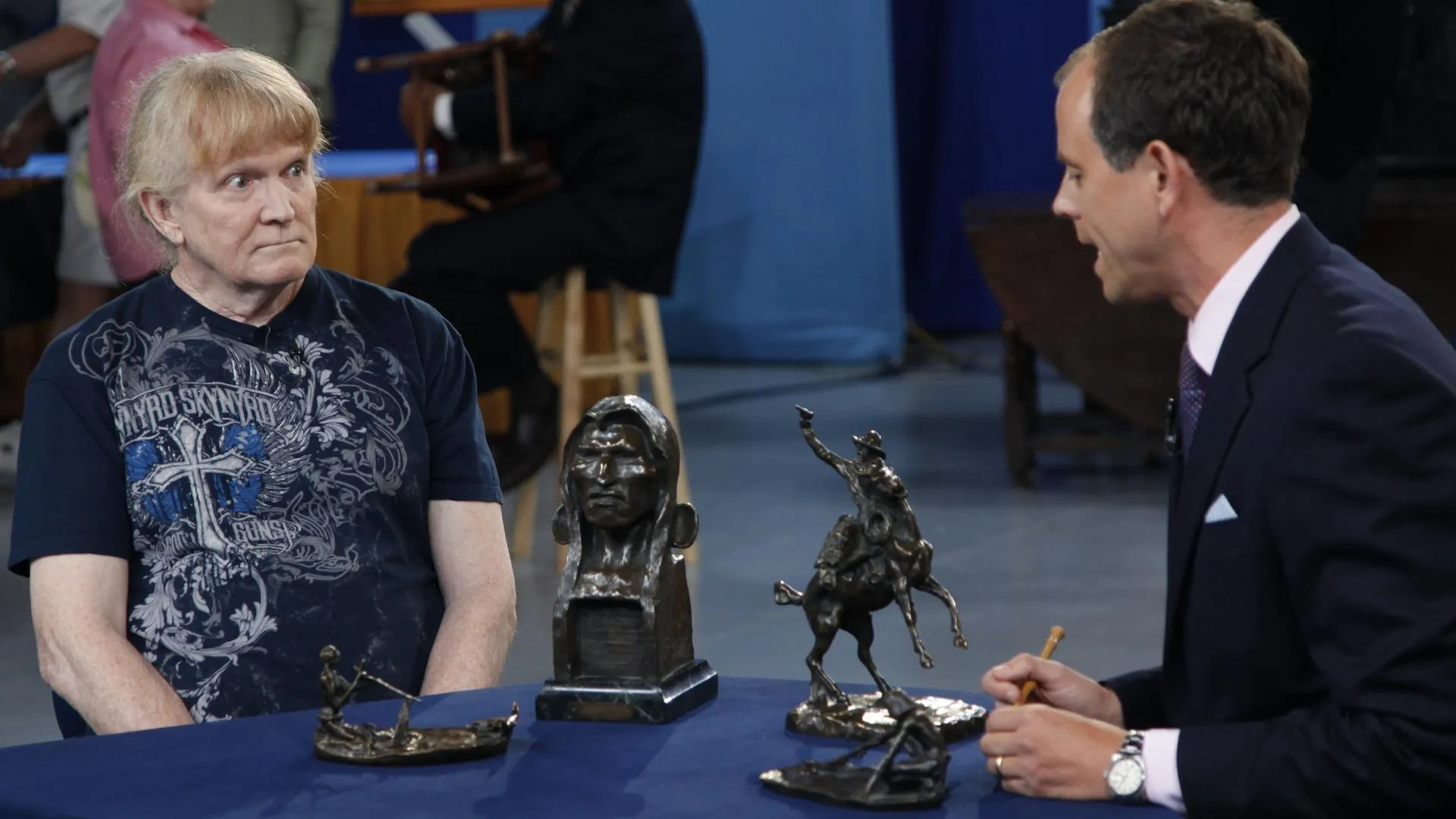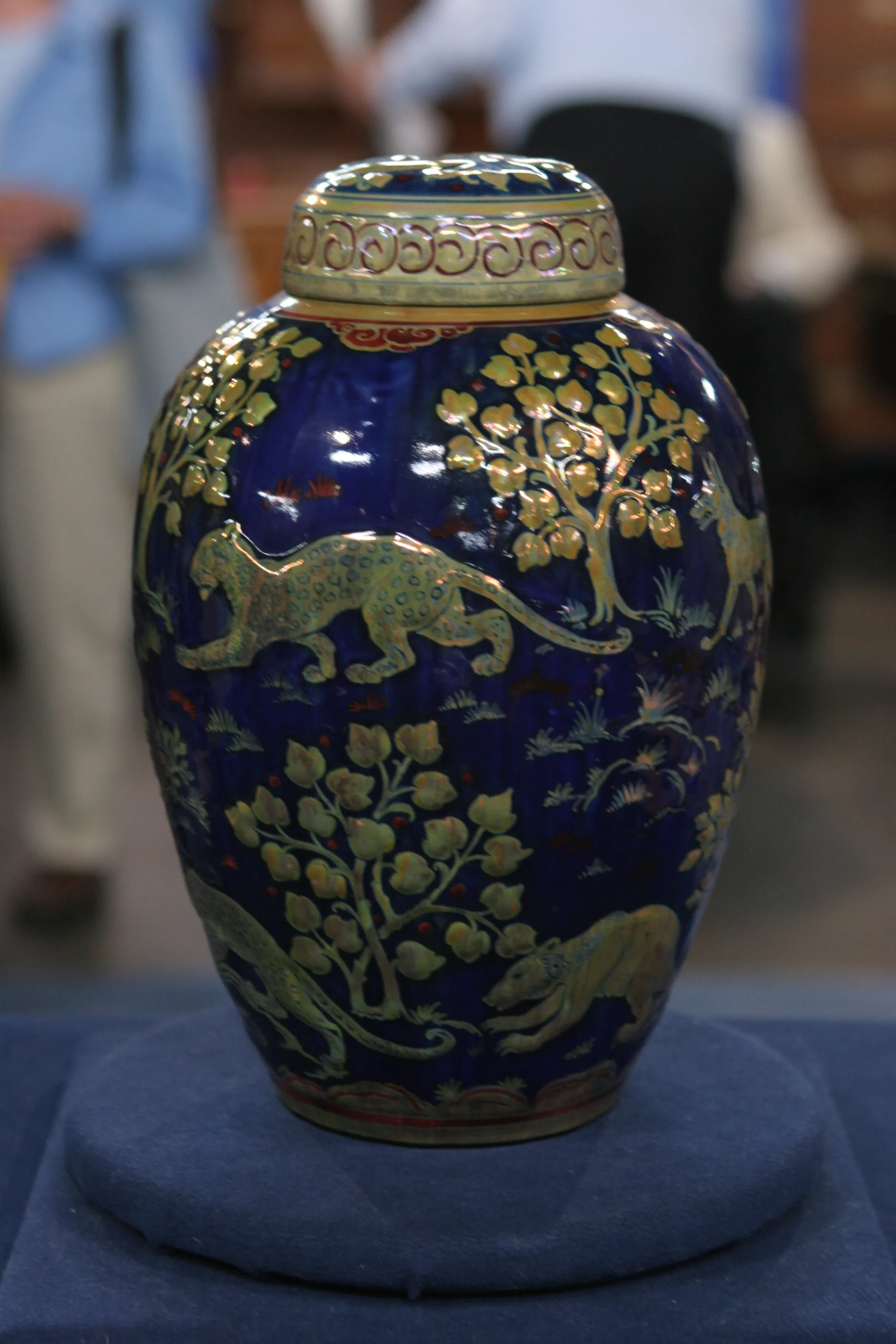GUEST: My friend Forrest Bess gave it to me in '62. He lived at a bait camp.
APPRAISER: Mm-hmm.
GUEST: Where he sold bait fish for fishing down in Chinquapin, Texas.
APPRAISER: And Forrest Bess is the artist, is that right?
GUEST: Right, right.
APPRAISER: And you knew him all through the years, or...?
GUEST: Yes, way back in the early '50s.
APPRAISER: Mm-hmm.
GUEST: And before that-- I knew his mom and dad, the whole family.
APPRAISER: Well, he must have been kind of a character.
GUEST: He was.
APPRAISER: Yeah.
GUEST: He painted his dreams. And this is one of his dreams.
APPRAISER: He was known as a Modernist, and his work is somewhat rare. We don't, don't see it very often. I don't think his production was particularly heavy. He was born in 1911 in Bay City, Texas. And I believe he lived a little bit in Texas and Oklahoma. He didn't really have much art training. From what I understand, he was taught by a neighbor who lived next door. He went to college in Texas, and he didn't study art. He studied Greek mythology, English, and also Darwin and Freud, who came to be important to him later on. Mm-hmm. For a while, he opened his own studio, but then he was, like many other artists, called to, to war, and he worked for the Corps of Engineers.
GUEST: Right.
APPRAISER: And then after the war, he was called back to be in charge of his family's bait company, in the late '40s, probably.
GUEST: Right. I think he came back then, and they lived in this small... House, you might say.
APPRAISER: Uh-huh.
GUEST: Some people might say it was a shack.
APPRAISER: Uh-huh.
GUEST: But he built onto that and built it up mainly out of driftwood that he found along the beach and stuff.
APPRAISER: Mm-hmm.
GUEST: In fact, the frame of this is driftwood.
APPRAISER: It's very interesting.
GUEST: Yeah.
APPRAISER: In the late '40s, he was discovered by a gallery owner named Betty Parsons, in New York.
GUEST: Right. Right.
APPRAISER: And she was very interested in the avant-garde, and when she first started her gallery in 1946, she represented Jackson Pollock and Mark Rothko. After they left her to go to another gallery, she continued to look for new artists. And Forrest Bess happened to be one of them. And if we look in the lower right, we see a little label, and that would probably indicate that it was in an exhibition of some sort, or in a catalogue.
GUEST: And this...
APPRAISER: And as well, on the back, we have a Betty Parsons gallery label, and the price of $150. The title here is listed as "Number 30," whereas in the artist's hand, over here on the stretcher, it says, "Untitled."
GUEST: Right.
APPRAISER: So it's possible that Betty decided to title the piece.
GUEST: Yeah.
APPRAISER: Now, you were saying that the artist liked to paint his dream.
GUEST: During the day he would take naps.
APPRAISER: Mm-hmm.
GUEST: And you'd see him wake up, and he'd write something in a book and go back to sleep.
APPRAISER: Mm-hmm.
GUEST: And then he would take that and put it on canvas. When he'd paint, he would go out and sift builders' sand through a screen bar.
APPRAISER: Mm-hmm.
GUEST: And use that sand, mixed with his paint, to give it bulk.
APRAISER: Oh, that's interesting, wow. Modernist works like these are very popular. Modernism in general is quite strong. If this were being sold in a gallery that specialized in 20th century and this, and this period, I believe the price would be in the range of $75,000.
GUEST (laughing): You're kidding.
APPRAISER: No. I'm not kidding.
GUEST: I would never have believed that. That, that is unbelievable.
APPRAISER: We thought you'd be surprised.
GUEST: (stammering) I'm... blown out of my... it's just unbelievable.












